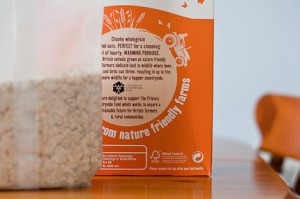I am concerned both at home and at work about the amount of single use plastic in my life. I have ditched the plastic from my milk, reuse all my plastic bags, try not to buy food in plastic wherever possible and refuse to drink out of a single use cup. At work we have slashed the amount of plastic cutlery, got rid of straws and are working on a few obvious quick wins. But, it is not as easy as it should be. In the wake of the recent publicity from Blue Planet 2 packaging companies have been quick to market their green alternatives. These take two forms, one based on plant materials and one with added sparkle (or something or other) to make the polymer degrade faster. Inevitably they tend to cost more than the fossil fuel equivalent.
But, whilst these sound, on the face of it, like a good idea, they are not as green as they would first seem and I have a couple of examples from my workplace to illustrate the conundrum.
Firstly, in our catering department they are keen to try to move away from standard plastics (although arguably less keen to move to reusable items). On their own they replaced their plastic boxes with a corn-starch based material. Now they are considering changing some of the other items for one made from Polylactic acid (PLA). This is also a plant based product that is similar to PET and has the advantage that it is not made from fossil fuels, is compostable and recyclable, and, if it is incinerated it won’t release the toxic chemicals found in many other plastics.

The second type came from elsewhere in the organisation. They had started a trial with a plastic bag that had an added chemical that means it is biodegradable. Again, it is alleged that it can be recycled, but also that it will degrade in landfill.
Both of these solutions to the plastic issue have some fundamental flaws (other than cost):
- One of the issues with plastics is that they don’t break down easily, but this gives them a relatively long shelf life. This is not the case if they contain biodegradable plastic, so these greener plastics are less recyclable.
- Most food waste in this country goes to anaerobic digestion, for a compostable plastic to be ‘greener’ it would need to go to an industrial composter. I have been told that there is currently only one in the UK.
- It is fine that something might break down in landfill, but not that much waste goes to landfill in the UK any more. Usually mixed waste goes to a material recycling facility, this separates out the plastics, metals etc., then sends the rest as energy from waste.
So, whilst these are probably a good idea for a use that cannot be recycled (such as medical devices or packaging that for some reason needs to be incinerated and for which a reusable device is just not practicable or available), or for places where littering may be more of an issue (here I am thinking of the PLA option, not the fossil fuel option with added chemical) for many applications where there are good recycling facilities and where the domestic waste also gets sorted, then these are still not the right answer.
